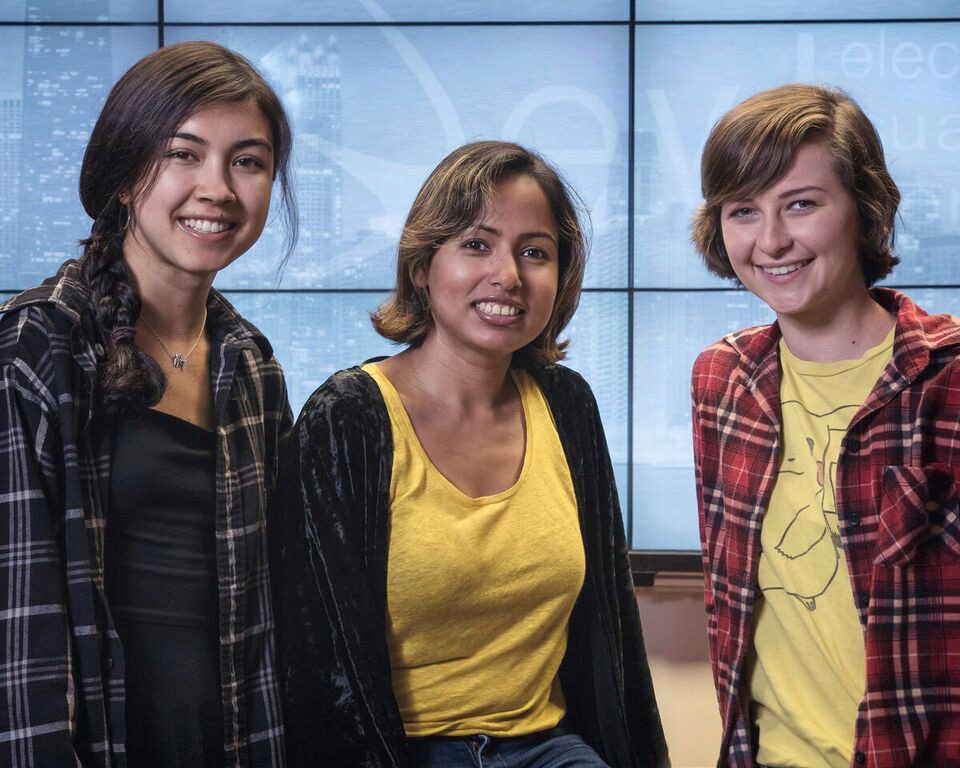Understanding Accessibility of Smartphone Map Applications for Older Adults
July 27th, 2017
Categories: Applications, Human Computer Interaction (HCI)

About
UIC Computer Science mentors two DREU undergraduates to work on summer research project
JULY 27, 2017 - Undergraduate students Taylor Day, from Texas A&M University, College Station, and Mariko Kamiya, from Swarthmore University, were selected to be part of this summer’s Distributed Research Experiences for Undergraduates (DREU) program, sponsored by the Computing Research Association Committee on the Status of Women in Computing Research (CRA-W) and the Coalition to Diversify Computing, with support from the National Science Foundation. The DREU program provides undergraduates with the opportunity to be directly involved in a research project and interact with graduate students and professors on a daily basis.
DREU matched the students with faculty mentor Debaleena Chattopadhyay, an assistant professor in the UIC Computer Science Department and its Electronic Visualization Laboratory (EVL). Given her expertise in human-computer interaction, she assigned Day and Kamiya a project: to study smartphone ease of use by older adults. More specifically, how accessible are smartphone map applications for people aged 65 and older? And, is there a better way to design a mobile map application that considers the effects of old age, such as decreased motor skills, worsening eyesight, and limited cognitive processing skills? This is an area that is little studied, yet 42% of adults aged 65+ own a smartphone in the U.S. in 2017.
In their 10-week summer internship, Day and Kamiya conducted a think-aloud user study with more than 12 older adults (for which they had applied for, and received, Institutional Review Board [IRB] approval), analyzed design requirements, learned web development, and prototyped a better application that integrated a probabilistic function to combat limited fine-motor skills during panning and zooming touchscreen maps. In what little spare time they had left, they even managed to explore Chicago a bit.
Though Day and Kamiya gave a presentation of their findings to other EVL students, staff and faculty on the last day of their internship at UIC, they are far from done. Chattopadhyay has plans for them to write and submit a short paper to a professional conference. And, Day submitted a poster proposal to the Grace Hopper Celebration of Women in Computing conference on her mathematical contributions to the mobile application prototype, which was accepted. Subsequently, she applied to the CRA-W Grace Hopper Celebration Research Scholars Program for travel support, and will find out if she is accepted in mid-August.
The DREU program requires its students to keep a Blog of their experiences. To learn more about Day’s and Kamiya’s experiences doing research at UIC and exploring the city of Chicago, see:
Taylor Day Blog
Mariko Kamiya Blog
For more information on the DREU program, see: http://cra.org/cra-w/dreu/